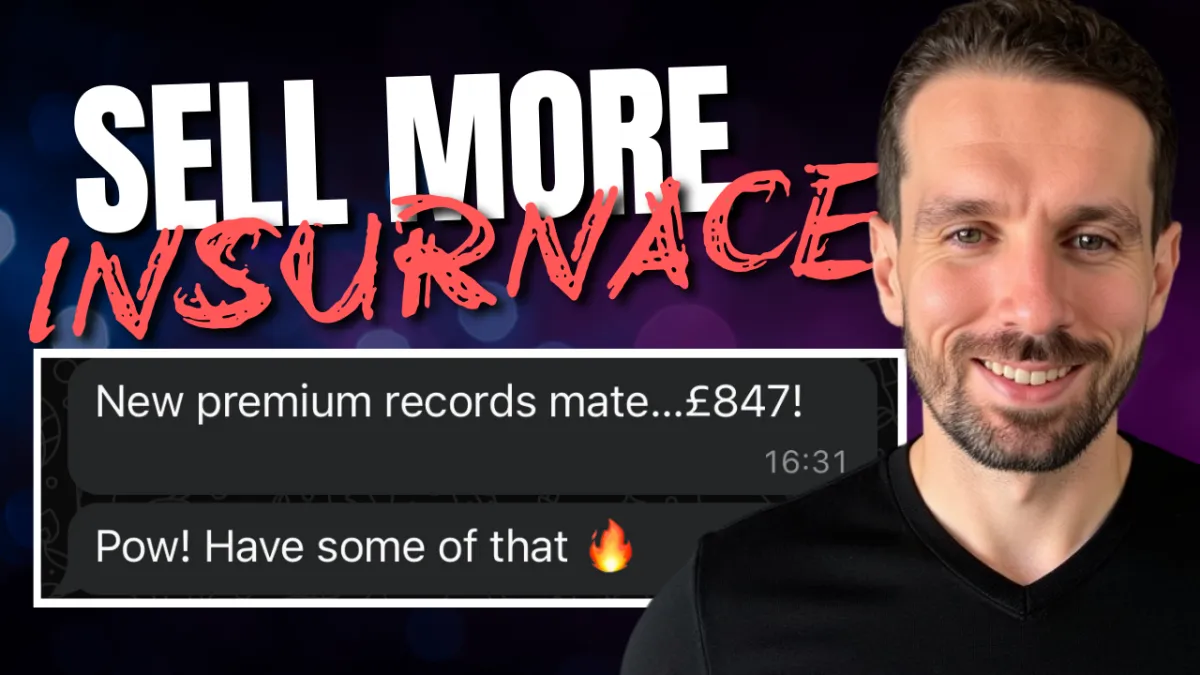
How to Sell More Insurance as a Mortgage Broker: Proven Tips to Boost Your Sales
Selling insurance as a mortgage broker isn’t always straightforward, is it? Whether it’s life insurance, income protection, or critical illness cover, introducing protection can feel like an uphill battle. But here’s the thing — it doesn’t have to be.
As a mortgage business coach, I’ve worked with brokers of all experience levels to help them integrate insurance into the mortgage process and dramatically increase their protection sales. With the right strategies, selling insurance can be a seamless part of your service, providing extra value for your clients while boosting your business.
In this blog, I’ll share my top tips for selling more insurance as a mortgage broker, including how to use price anchoring, pitch full insurance solutions, and lead with income protection. Whether you’re just starting out or have years of experience, these strategies will help you maximise your results.
1. How to Introduce Insurance During the Discovery Call
One of the biggest mistakes I see brokers make is waiting too long to bring up insurance. It’s crucial to talk about protection from the very first interaction — your discovery call.
When I coach brokers as a mortgage broker coach, I encourage them to position insurance as an integral part of the mortgage package. This package includes:
Monthly mortgage payment
Buildings and contents insurance
Personal protection (life insurance, critical illness cover, and income protection)
By presenting it this way, clients see their mortgage and protection as one cohesive package, rather than separate decisions. For example, you might say:
“Your mortgage package includes everything you need to own your home: the loan, buildings insurance, and personal protection. Together, they make up your monthly payment.”
This framing normalises insurance as a necessary part of the process, making it easier to discuss in detail later on.
2. Simplifying the Insurance Sales Pitch
When it comes to selling insurance, clients often feel overwhelmed by jargon and endless options. That’s where simplification becomes key.
Break it down like this:
Life insurance: Pays out if you pass away.
Critical illness cover: Pays a lump sum if you’re diagnosed with a serious illness.
Income protection: Covers your income if you can’t work due to illness or injury.
By keeping it straightforward, you’ll help clients understand the value without feeling bogged down by details. No one needs to hear about every single policy feature during the initial discussion — save that for later.
For example, clients aren’t buying insurance for a free Fitbit or coffee perks. They’re buying it because it provides financial security for their family. This is something I often help my clients master as a mortgage business coach — keeping things simple while delivering maximum value.
3. Why Budget Discussions Hurt Insurance Sales
Here’s the thing: asking for a client’s budget can derail the entire conversation.
Clients often have unrealistic expectations about what they can get for a low monthly premium. If you ask, “What’s your budget?”, they might say, “I want full cover for $10 a month.” That’s just not realistic.
Instead, focus on the value of the full insurance solution. Show them how income protection, life insurance, and critical illness cover work together to provide complete peace of mind. Clients are more likely to invest when they see the bigger picture, rather than being anchored to a low figure they’ve plucked from thin air.
This is a strategy I’ve refined over years of coaching brokers, and it’s one of the reasons brokers work with me as their mortgage broker coach.
4. Using Price Anchoring to Set Expectations
Price anchoring is a powerful technique that sets the stage for realistic expectations. Here’s how I recommend doing it:
Anchor to a percentage of their income: For example, if your client earns $3,000 a month, suggest allocating around $150 (5%) towards protection.
Avoid weak comparisons: Don’t compare life insurance to pet or car insurance — these aren’t meaningful benchmarks for clients.
Tie it to their lifestyle: Frame it as part of their financial resilience, ensuring they can maintain their home and lifestyle no matter what happens.
For example, you could say:
“Most clients I work with invest around 5% of their monthly income into protection. That ensures they can maintain their mortgage and lifestyle, even in the worst-case scenario.”
This is one of the most valuable lessons I teach as a mortgage business coach — how to anchor prices in a way that helps clients see value rather than cost.
5. Why You Should Always Pitch Full Insurance Solutions
We often hear about brokers tailoring policies to fit “what clients can afford.” While affordability matters, your role as an advisor is to recommend what’s truly needed to eliminate financial risk.
A full insurance solution typically includes:
Life insurance to cover the mortgage
Critical illness cover to manage serious health challenges
Income protection to maintain their lifestyle if they can’t work
When I pitch full solutions, I emphasise that clients have taken on significant debt with their mortgage, and protection is the only way to eliminate the financial risks that come with it. For example:
“As your advisor, I recommend a full solution because it provides complete financial protection for you and your family. You’ve worked hard to get your home, and this package ensures you can keep it no matter what happens.”
This approach positions you as a trusted advisor and is something I emphasise in my role as a mortgage broker coach.
6. Leading With Income Protection
If you’re wondering how to increase insurance sales as a mortgage broker, start with income protection. Why? Because it’s the most relevant policy for most clients.
Income protection ensures your client can continue paying their bills — including their mortgage — if they’re unable to work due to illness or injury. It’s the foundation of financial security.
When presenting options, lead with:
Income protection for living expenses
Family income benefit (FIB) to provide ongoing support if they pass away
7. Submitting Mortgage and Insurance Applications Together
One of the best practices for selling insurance with mortgages is to submit both applications at the same time.
Here’s why:
It keeps the process seamless: Clients see the mortgage and insurance as part of a single transaction, making them less likely to skip the insurance.
It increases completion rates: If you submit the mortgage first, clients often deprioritise the insurance. Submitting everything together keeps the momentum going.
As a mortgage business coach, I work with brokers to streamline this process, helping them achieve higher completion rates and better client outcomes.
Let’s Stay Connected
If you’re ready to take your mortgage business to the next level, I’d love to connect with you:
Instagram: Follow me for daily tips and insights.
LinkedIn: Connect here for professional advice and updates.
Facebook: Join the conversation on all things mortgages and marketing.
For even more resources, grab your free Mortgage Marketing Blueprint here, and be sure to tune into the Mortgage Business Mastery Podcast on Apple, Spotify, or YouTube.
These strategies have helped brokers not only sell more insurance but also build stronger, more trusting relationships with their clients. Give them a try, and let me know how they work for you!
